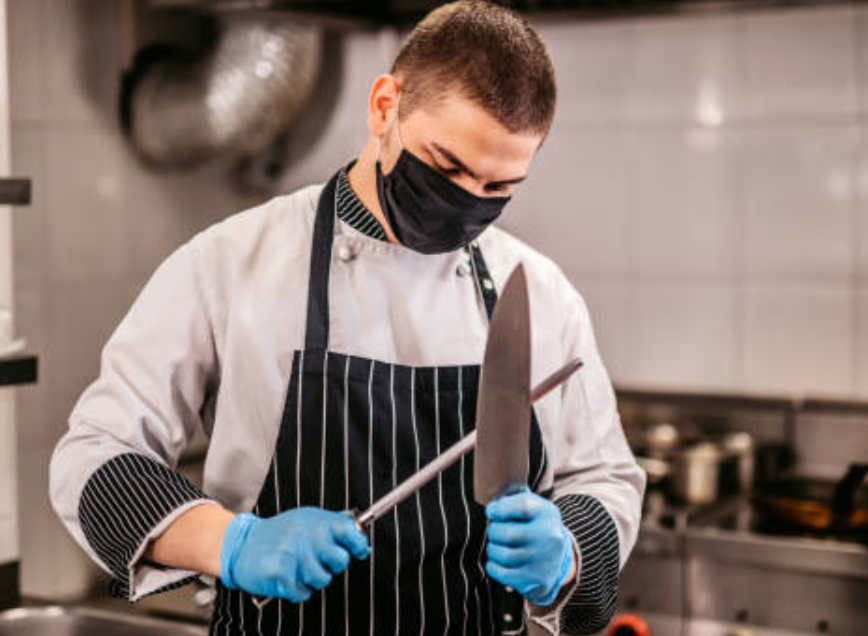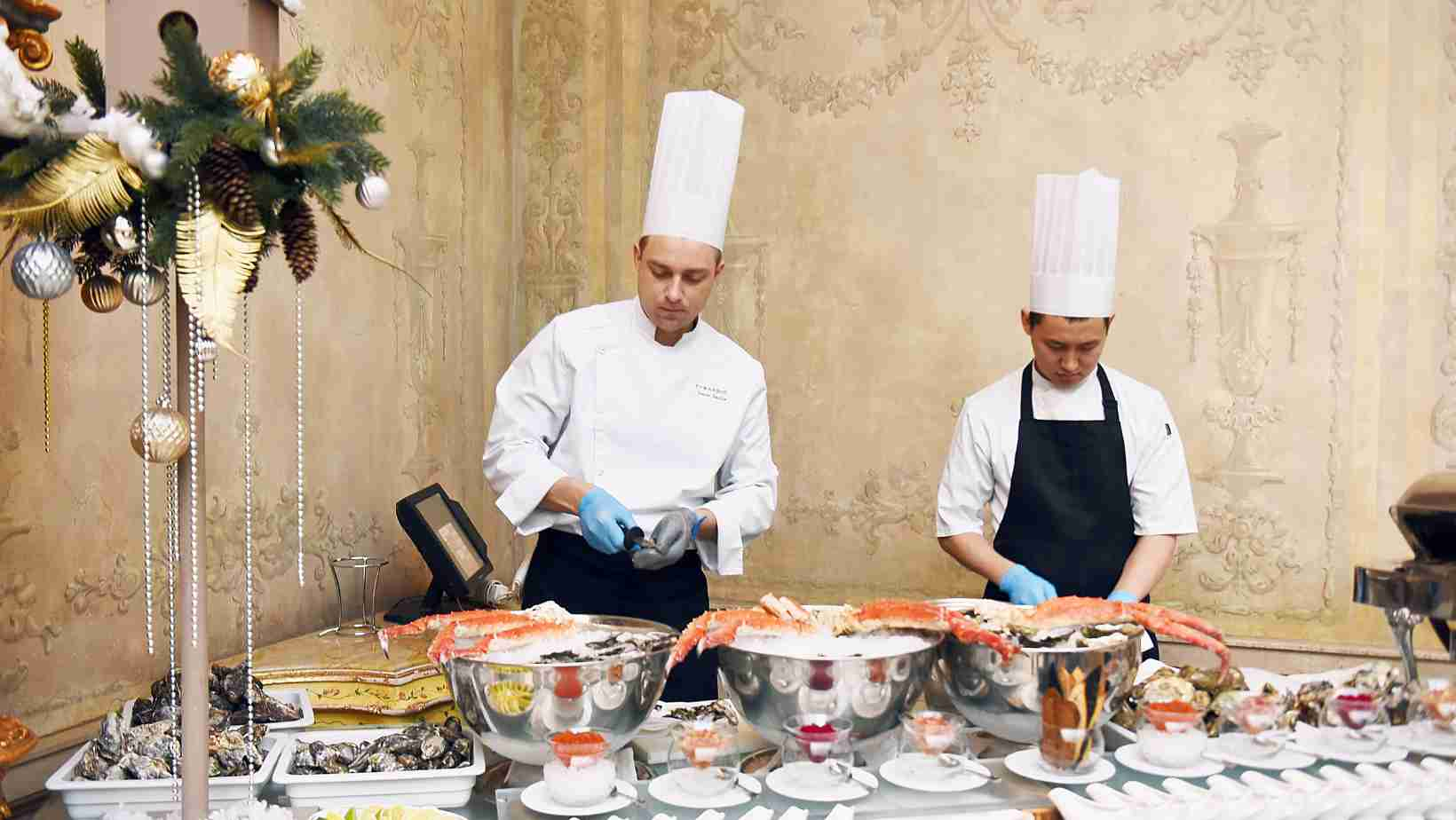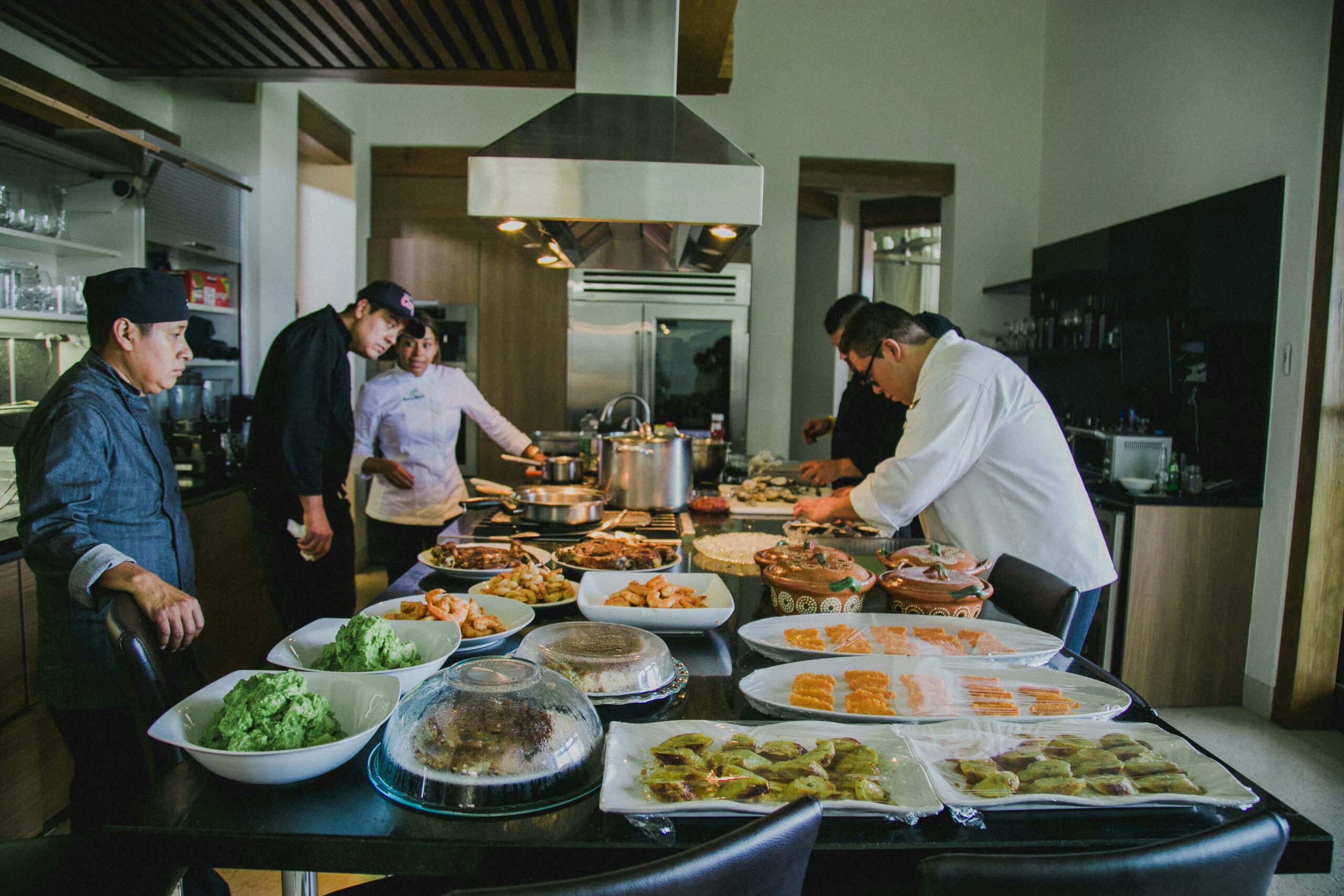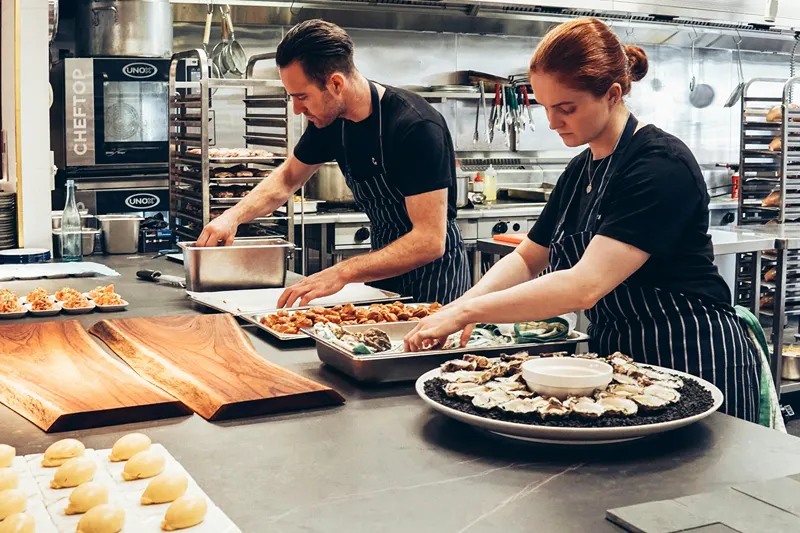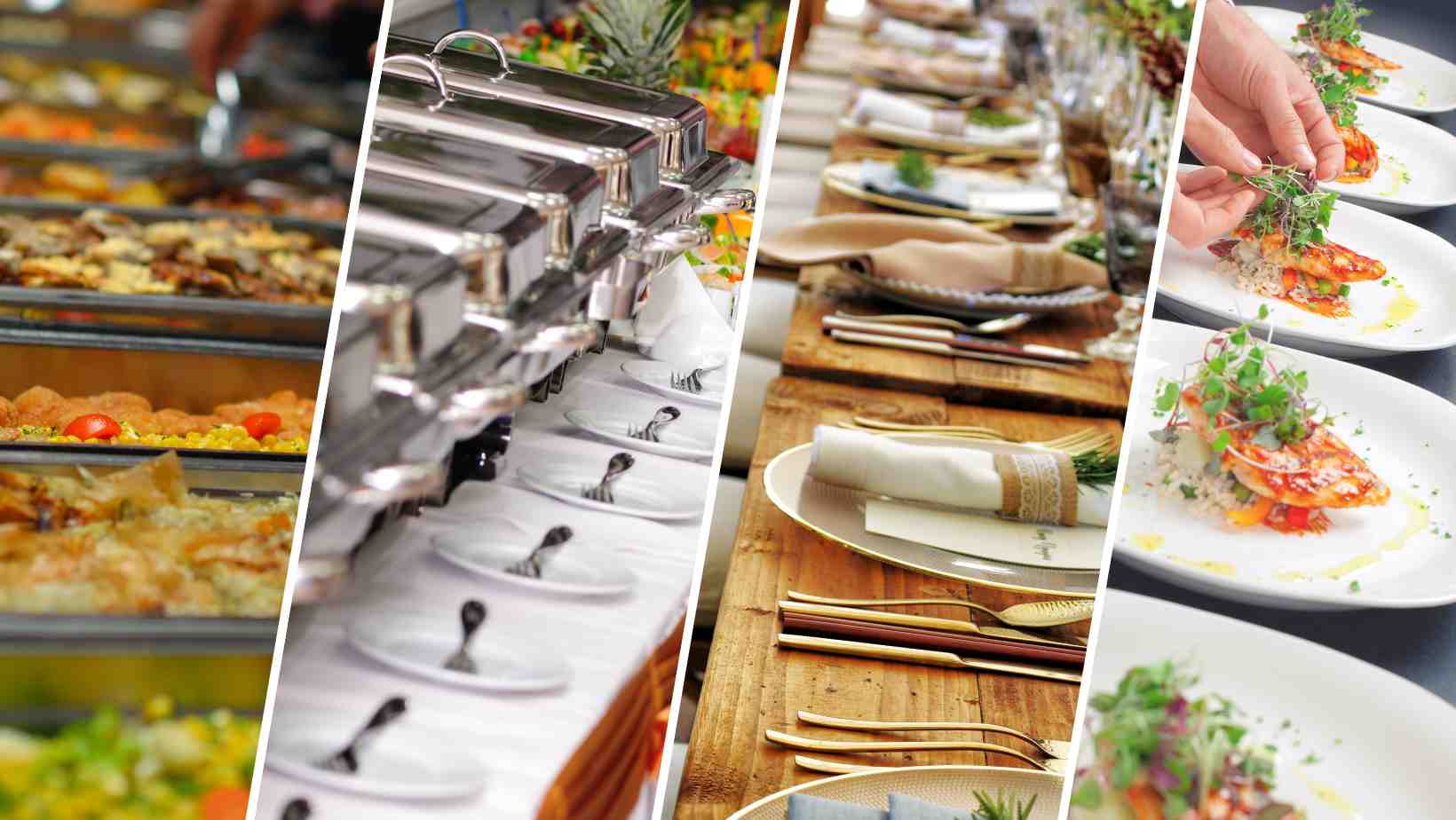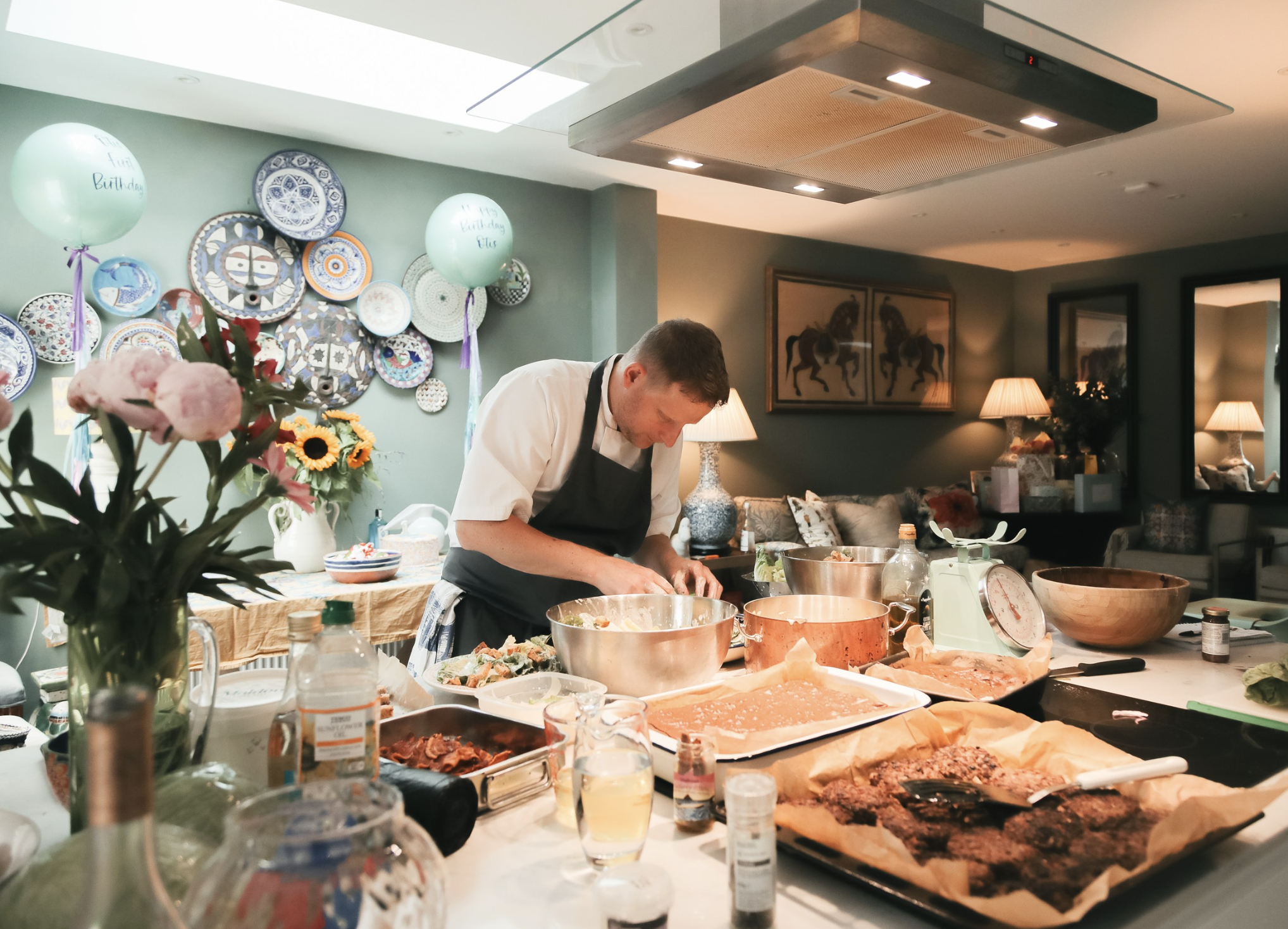5 Best Ways to Sharpen Kitchen Knives at Home
5 Effective Ways To Sharpen Knives At Home
Whether you need a swift veggie chopper or a precise blade for meat cuts, we have a solution for everyone.
1. Whetstone Sharpening
Using a whetstone to sharpen kitchen knives is a traditional and highly effective method. A whetstone is a flat stone that comes in various grits, typically ranging from coarse to fine. There are two main types of whetstones: synthetic and natural. While synthetic stones are usually more consistent and faster, natural stones offer a finer finish.
To sharpen your knife, start by soaking the stone in water for about 10-15 minutes. Place the stone on a non-slip surface and hold the knife at a 20-degree angle. Using even pressure, slide the blade across the stone from the heel to the tip in a sweeping motion. Repeat this on either side of the blade until you achieve the desired sharpness.
Highlights:
- Pros: Provides a very sharp edge, and can be used to sharpen all kinds of knives.
- Cons: Can be slightly time-consuming, and requires skill and practice.
- Safety Measures: Wear cut-resistant gloves to protect your hands and ensure the stone is on a stable surface to prevent slipping. Always sharpen away from your body to avoid accidents.
- Difficulty Level: 🔪 🔪🔪
2. Sharpening Rod (Honing Rod)
If you’re wondering how you sharpen kitchen knives quickly, a honing rod is your answer! Honing rods come in various materials, including steel, ceramic, and diamond-coated. Each type offers different levels of abrasion and longevity, and are ideal for touch-ups rather than full sharpening.
To use a honing rod, hold it vertically with the end resting on a non-slip surface. Hold the knife at a 15 to 20 degree angle against the rod. Starting at the bottom of the blade, draw the knife down and across the rod in a sweeping motion, finishing at the tip. Repeat this technique on both sides of the blade for several strokes.
Highlights:
- Pros: Quick, easy to use, and great for maintaining an already sharp edge.
- Cons: Doesn’t sharpen dull knives; only realigns the edge.
- Safety Measures: Always keep the rod stable on a non-slip surface and use controlled, steady motions. Hold the knife securely and ensure your fingers are clear of the blade’s path. For added safety, wear cut-resistant gloves.
- Difficulty Level: 🔪 🔪
3. Electric Knife Sharpeners
Electric knife sharpeners are a quick and efficient solution for sharpening kitchen knives. They come in various models, from basic to professional-grade, often with multiple sharpening stages (coarse, medium, and fine). The best part about using an electric knife sharpener is the fact that you don’t need to worry about what angle to sharpen kitchen knives at since these devices come with pre-set sharpening angels (usually between 15-20 degrees).
While some experts consider this tool controversial and tedious, it is great for home cooks looking for a simple fix. To use an electric sharpener, simply turn on the device and insert the blade into the designated slot. Slowly draw the knife through the slot, allowing the sharpener to do the work. Repeat the process a few times until the blade is sharp.
Highlights:
- Pros: Fast and requires little to no skill to use.
- Cons: Can be expensive, and may remove more metal from the blade than necessary, reducing the knife’s lifespan.
- Safety Measures: Follow the manufacturer’s instructions carefully. Keep fingers away from the sharpening slots and ensure the device is on a stable surface. Avoid over-sharpening to prevent excessive wear on the blade.
- Difficulty Level: 🔪
4. Sharpening Systems
Wondering how to sharpen kitchen knives for meat cuts in a budget-friendly manner? Sharpening systems are the solution! Sharpening systems are comprehensive kits designed to give you precise control over sharpening kitchen knives. If you’re searching for the best tool to sharpen kitchen knives with professional results, a sharpening system might be your answer. These systems typically include adjustable guides, clamps, and multiple grit stones.
To use a sharpening system, secure the knife in the clamp and select the appropriate grit stone. Begin with a coarse grit to shape the edge and progress to finer grits for a razor-sharp finish. The system’s guides help maintain a consistent angle throughout the process.
Highlights:
- Pros: Provides precise control over sharpening angle and pressure.
- Cons: Time-consuming to set up and is also comparatively expensive.
- Safety Measures: Follow the system’s instructions carefully. Use a stable surface and ensure all components are securely fastened. Start with lower grits to avoid removing too much metal at once, and always sharpen away from your body. Wearing cut-resistant gloves can add an extra layer of safety.
- Difficulty Level: 🔪🔪
5. Leather Strop
A leather strop is a finishing tool used to achieve an ultra-sharp edge on your kitchen knives. It’s considered one of the best ways to sharpen kitchen knives to a fine polish. Strops can be mounted on a block or used as a flexible strip. Some strops even come pre-loaded with honing compound.
To use a leather strop, apply a small amount of honing compound to the leather surface. Hold the knife at a very shallow angle and draw it backward along the strop, ensuring you move the entire length of the blade from heel to tip. Repeat this process on both sides of the blade for several passes.
Highlights:
- Pros: Provides a very fine edge and high polish.
- Cons: Does not sharpen a dull blade, and requires additional tools like honing compound for best results.
- Safety Measures: Always strop away from your body to avoid accidental cuts. Use even, controlled pressure to prevent the blade from digging into the leather. Keeping your fingers clear of the blade’s path and using a stable surface can enhance safety.
- Difficulty Level: 🔪🔪🔪
5 Tips for Sharpening Knives
- Angle Matters: Maintaining the correct angle, generally 15-20 degrees for most kitchen knives, ensures a fine and durable edge. This is crucial for optimal sharpness and performance.
- Consistency: Apply even pressure and maintain uniform strokes to achieve a consistent edge. Inconsistent sharpening can result in an uneven blade.
- Safety First: Use a secure, non-slip surface and keep fingers away from the blade to avoid injuries. Consider wearing cut-resistant gloves for added protection.
- Regular Maintenance: Regular honing realigns the blade’s edge, maintaining sharpness between sharpening sessions. This reduces the need for frequent sharpening and extends the knife’s lifespan.
- Testing Sharpness: Perform the paper test or tomato test to check your knife’s sharpness. A sharp knife will cut cleanly through paper and slice effortlessly through a tomato.
Whether using a whetstone, honing rod, or other sharpening tools, these practices ensure a sharp and efficient blade, enhancing your overall cooking experience.
Whether you're hosting a special celebration dinner, looking for a chef during your holiday or weekly meal prep, we will match you to the perfect chefs.
Start hereTake Your Culinary Journey To The Next Level
We’ve shared the best ways to sharpen your kitchen knives, ensuring your cooking is elevated to the next level. But why keep those delicious dishes to yourself? Sharing your culinary creations as a private chef could be the perfect next step. It might seem daunting, especially if you don’t have professional experience, but there are platforms and communities across the web that can help you.
One such platform is Yhangry, which helps thousands of chefs in the UK turn their culinary dreams into reality. Yhangry connects you with clients who are looking for personalised dining experiences, making it easy to find and manage bookings. With support in marketing, client matching, and flexible scheduling, yhangry lets you focus on what you love—cooking. Start your journey today and turn your passion into a thriving career!
- What does Gordon Ramsay use to sharpen his knives?
-
Gordon Ramsay uses a steel rod to sharpen his knives. He holds the rod at a 45 degree angle and pulls the knife across it in long strokes.
- Which knives cannot be sharpened?
-
Serrated knives, ceramic knives, knives with a Granton edge, and very cheap knives made of soft metal generally cannot be sharpened.
- What is the most cost-effective way to sharpen a knife?
-
The most cost-effective way to sharpen knives is to use a steel rod, which can be purchased for under $10. Sharpening stones are also affordable but require more skill. Avoid electric sharpeners, which can damage blades over time.
